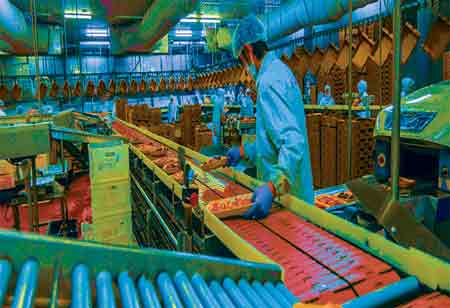THANK YOU FOR SUBSCRIBING
Be first to read the latest tech news, Industry Leader's Insights, and CIO interviews of medium and large enterprises exclusively from Food and Beverage Tech Review
Leveraging Automation Technology in Food Packaging
Automated equipment in food packaging is replacing manual packaging methods.

By
Food and Beverages Tech Review | Friday, December 30, 2022
Stay ahead of the industry with exclusive feature stories on the top companies, expert insights and the latest news delivered straight to your inbox. Subscribe today.
Manufacturers are maximizing food packaging processes by utilizing automated solutions.
FREMONT, CA: Automated equipment in food packaging is replacing manual packaging methods. Warehouses are employing robotic solutions for food material handling. Automated solutions along the packaging line, such as pick and drop processes, scanning, sealing, and producing packaging, improve product quality and timely supply. An increasing number of food manufacturers rely on convenience and efficiency to meet consumer and production demands. Automation widens the scope of the quality of manufacturing. Industries can factor in sustainability in food packaging by utilizing environmentally friendly packaging practices. It aids in recycling food packages by providing recycling information on packaging.
Food packaging automation helps manufacturers keep up with the changing field of production. The advantages of automating food packaging are:
Safety: Automated equipment reduces human involvement in the packaging line, and human workers do not handle hazardous packaging methods like caning and meat processing. Automated equipment processes are more efficient and cost-effective than human involvement, reducing workplace injuries and downtime.
Scalable: Automation makes salable more cost-effective. Businesses do not have to upgrade every aspect of their production processes to increase productivity. Updating or installing only the equipment can generate more productivity. Manufacturers spend less time and resources on training new workers.
Traceability: Automated packaging provides a clearer record of food packaging activities in the production line. Manufacturers can refer to codes in automated labels to track the facilities and packaging processes of the food product.
Cost-effective: Machines account for a larger number of workers' output. Industrialists require fewer workers to package an expanding amount of goods that are produced. More resources can be invested in other areas of the food manufacturing process. Automated machines only need an initial investment, consume electricity and regular maintenance, and the overall expenditure is lesser.
Productivity: Automated machines have a higher output rate than human workers, and robotics can multiply packaging rates by numerous times in the same timeframe it takes for human workers. Manufacturers can program different tasks in many automated machines to expand production capabilities.
I agree We use cookies on this website to enhance your user experience. By clicking any link on this page you are giving your consent for us to set cookies. More info







